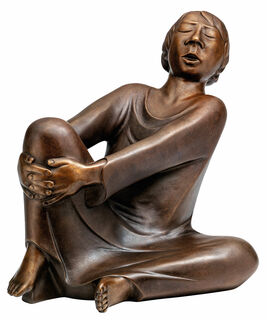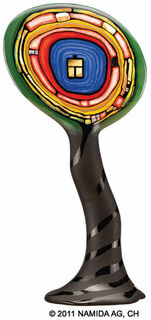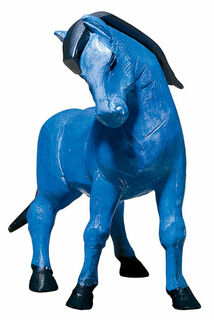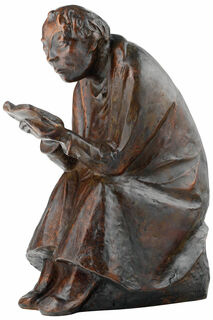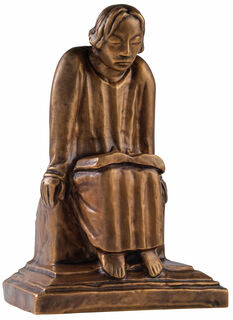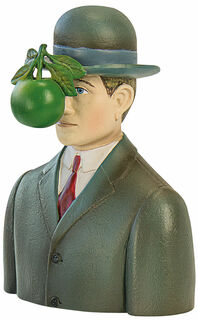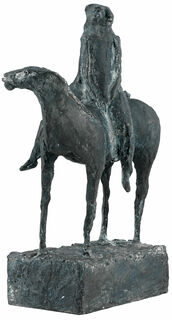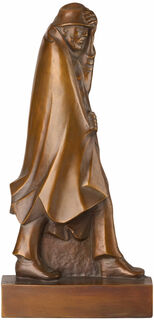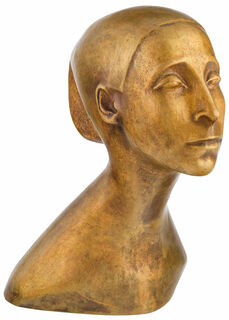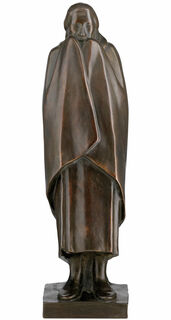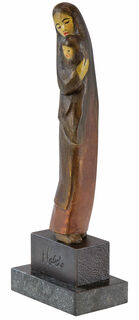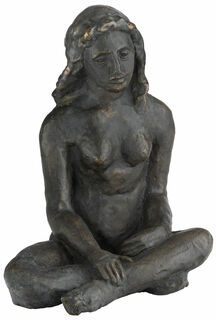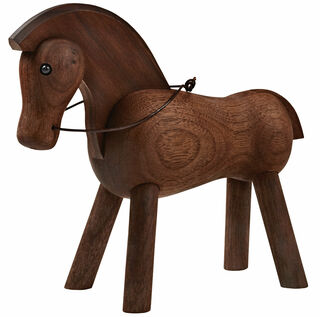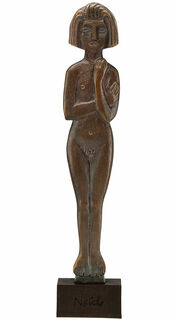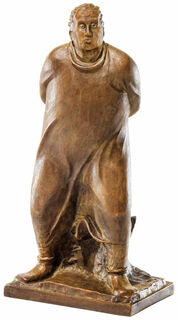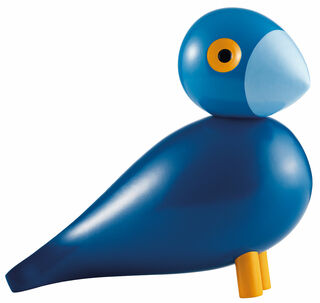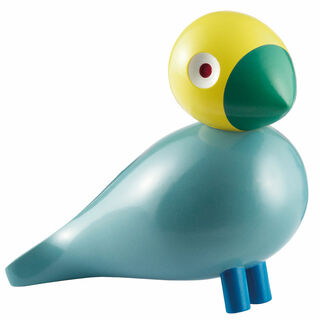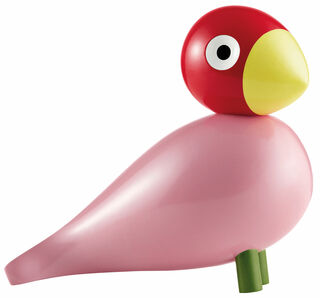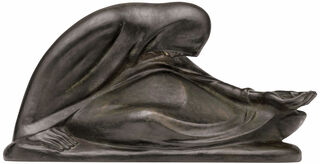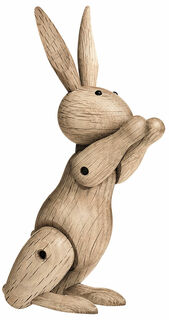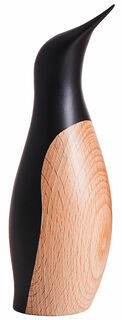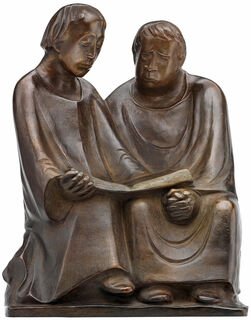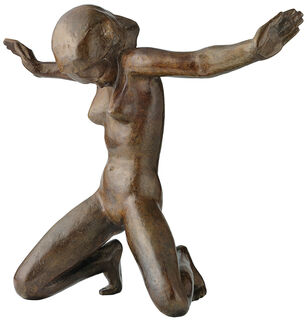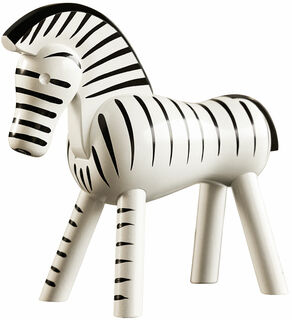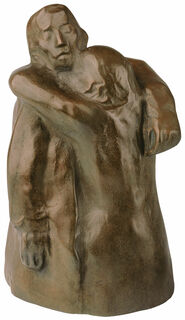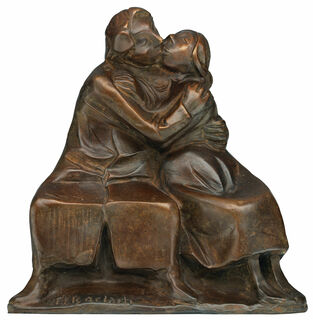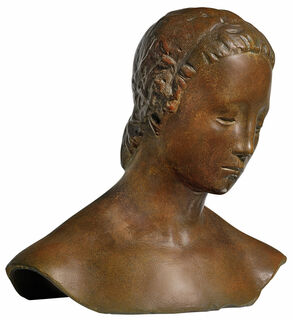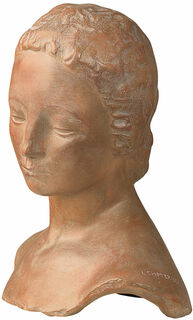20th century
Sculptures in the 20th Century: Changes in Three-Dimensional Works of Art
Throughout the 20th century, sculpture continued the trends that had already begun in the 19th century. Probably the most significant change in the visual arts was the rejection of realistic or figurative representation, which finally culminated in abstraction. The first tendencies towards this shift were already visible around the turn of the century - for example with Impressionism and later Expressionism. Many other styles that still influence contemporary art today originated in the 20th century, such as Kinetic art or Found Object Art. Some famous 20th-century artists working in sculpture are Alberto Giacometti, Henry Moore, Tony Cragg, Bruce Nauman, Richard Serra, Nikki de Saint Phalle, Georg Baselitz, Markus Lüpertz, Alfred Hrdlicka, Jeff Koons or Damien Hirst.
The Dawn of Modern Sculpture: Expressionism and Cubism
Until well into the 19th century, sculpture dealt exclusively with concrete objects and people and was committed to depicting motifs as realistically as possible. At the latest with Expressionism at the end of the 19th century, sculptors liberated themselves from this design principle, expressing their subjective views and their emotions in their works. Thus, realistic proportions gradually gave way to lines guided by the artists' impulses. Artists from Germany, such as Wilhelm Lehmbruck, Ernst Barlach and Georg Kolbe created works at the beginning of the century that became ground-breaking for modern sculpture. Cubism also had a strong influence on 20th-century art at the turn of the century. In addition to his paintings, Pablo Picasso created sculptures that, like his paintings, relied on standardised forms. This approach would significantly impact famous 20th-century artists such as Alberto Giacometti and Henry Moore.
A New Start in Sculpture: Kinetics, Found Object, Abstraction
The tendency of moving away from nature’s replication as the sculpture’s purpose culminated in abstraction. Constructivists already abandoned representational forms and worked predominantly with basic geometric forms. For example, the Dutch De Stijl movement and the Bauhaus in Germany relied on clear lines and reduced forms, although they did not completely abandon figuration. The reinterpretation of sculpture continued in the first half of the 20th century. Milestones of 20th-century art include Kinetic sculptures by artists like Alexander Calder or later Jean Tinguely. They created spatially expansive mobiles made of metal or motor-driven machines that moved without a recognisable function. Another avant-garde art form was the "Found Objects". Their pioneer Marcel Duchamp took everyday objects, repurposing them to art by placing them in new contexts or minimally manipulating them.
Contemporary Concepts of Sculpture: From Pop Art to Mixed Media
Sculpture continued to develop significantly in the second half of the 20th century. In the 1960s, the ideas of Pop Art found their way into sculptures. Claes Oldenburg, for example, created monstrously enlarged, stylised everyday objects for public spaces, and Robert Indiana became world famous for his "LOVE" sculptures made of oversized letters. Minimal Art, with its highly reduced stylistic idiom, also emerged from the USA. In addition, there was a tendency to combine sculptures with other disciplines and styles, blurring the boundaries with other forms of expression, such as installation, object art or light art. In addition to the styles already mentioned, numerous other forms of expression developed in the 20th century that also had a lasting influence on art in the 20th century, such as DaDa, Surrealism or Nouveau Réalisme.

